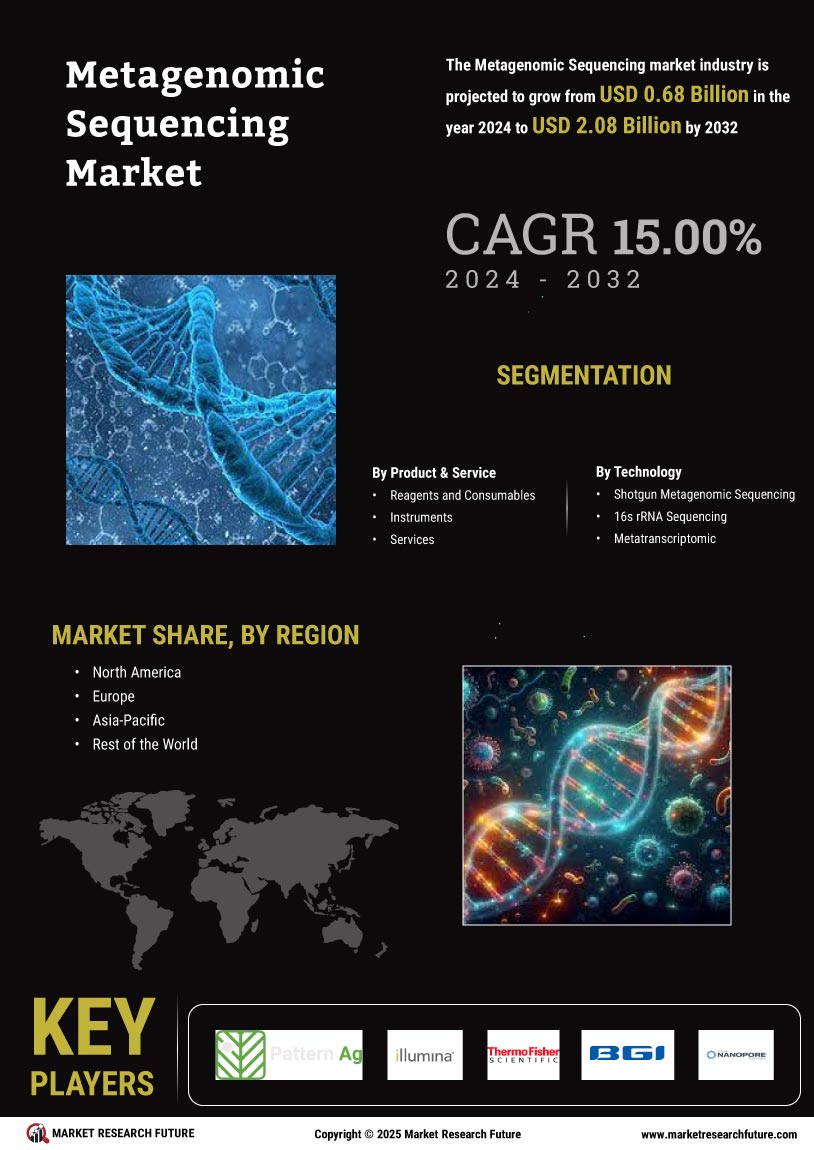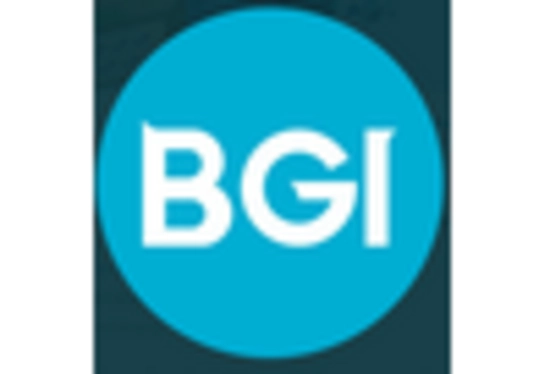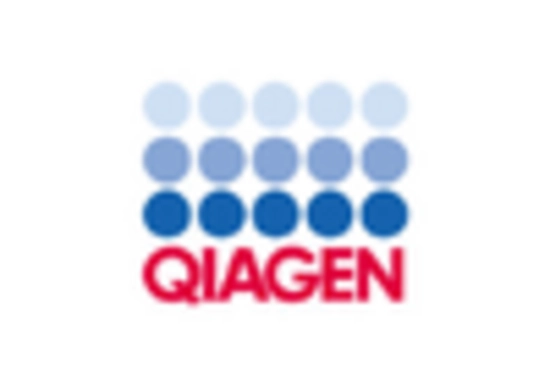The Metagenomic Sequencing Market is currently characterized by a dynamic competitive landscape, driven by advancements in technology and increasing applications across various sectors, including healthcare, environmental monitoring, and agriculture. Key players such as Illumina (US), Thermo Fisher Scientific (US), and BGI Genomics (CN) are at the forefront, leveraging their extensive research capabilities and innovative product offerings to capture market share. Illumina (US) focuses on enhancing its sequencing platforms, while Thermo Fisher Scientific (US) emphasizes expanding its portfolio through strategic acquisitions. BGI Genomics (CN) appears to be concentrating on regional expansion, particularly in Asia, to bolster its market presence. Collectively, these strategies contribute to a competitive environment that is increasingly characterized by innovation and technological advancement.
In terms of business tactics, companies are increasingly localizing manufacturing and optimizing supply chains to enhance efficiency and reduce costs. The Metagenomic Sequencing Market is moderately fragmented, with several players vying for dominance. This fragmentation allows for a diverse range of products and services, yet the influence of key players remains substantial, as they set industry standards and drive technological advancements.
In August 2025, Illumina (US) announced the launch of its new sequencing platform, which reportedly offers enhanced throughput and accuracy. This strategic move is likely to solidify Illumina's position as a leader in the market, as it addresses the growing demand for high-quality sequencing solutions. The introduction of this platform may also catalyze further innovations within the industry, as competitors strive to match or exceed these advancements.
In September 2025, Thermo Fisher Scientific (US) completed the acquisition of a prominent bioinformatics company, which is expected to enhance its capabilities in data analysis and interpretation. This acquisition underscores the importance of integrating advanced analytics into sequencing workflows, thereby improving the overall value proposition for customers. By bolstering its bioinformatics offerings, Thermo Fisher Scientific (US) positions itself to better serve the evolving needs of researchers and clinicians.
In July 2025, BGI Genomics (CN) expanded its operations into Southeast Asia, establishing new partnerships with local research institutions. This strategic expansion is indicative of BGI's commitment to increasing its footprint in emerging markets, where demand for metagenomic sequencing is on the rise. By collaborating with regional entities, BGI Genomics (CN) not only enhances its market presence but also fosters innovation through localized research initiatives.
As of October 2025, the Metagenomic Sequencing Market is witnessing trends such as digitalization, sustainability, and the integration of healthcare artificial intelligence. These trends are reshaping competitive dynamics, as companies increasingly seek strategic alliances to enhance their technological capabilities and market reach. The shift from price-based competition to a focus on innovation, technology, and supply chain reliability is becoming evident. Moving forward, differentiation in the market will likely hinge on the ability to deliver cutting-edge solutions that address the complex needs of diverse sectors.


















Leave a Comment